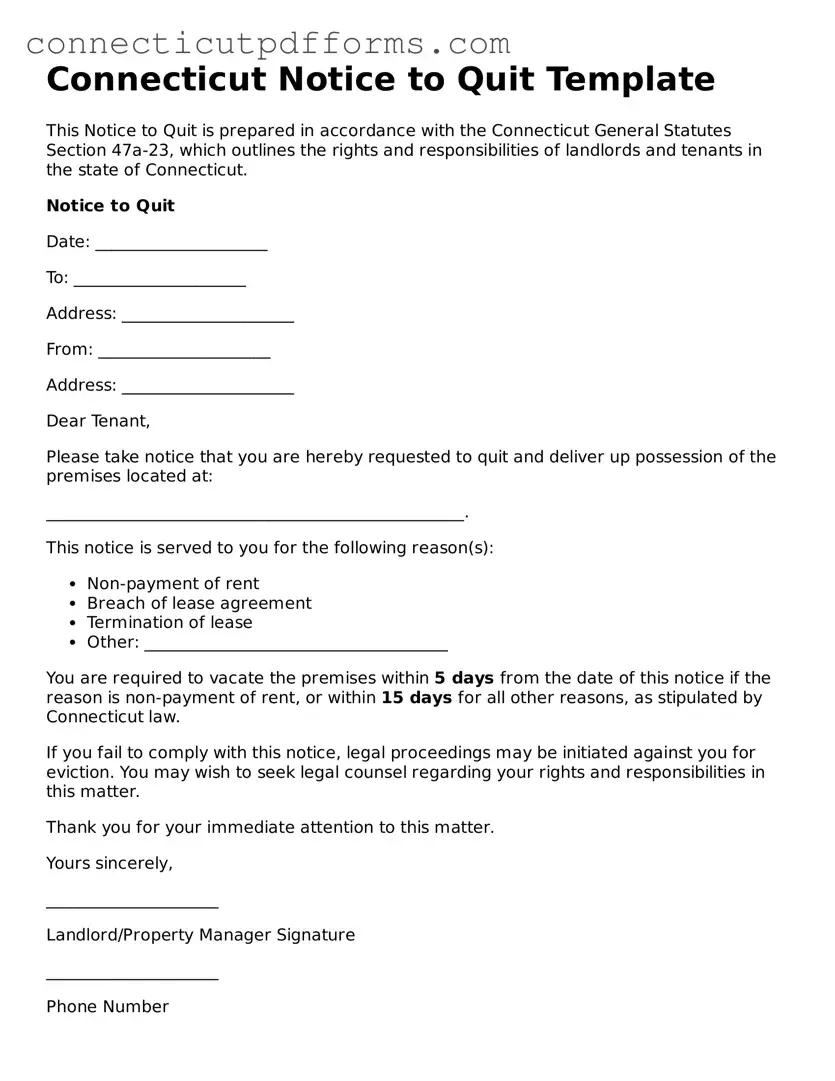Connecticut Notice to Quit Template
This Notice to Quit is prepared in accordance with the Connecticut General Statutes Section 47a-23, which outlines the rights and responsibilities of landlords and tenants in the state of Connecticut.
Notice to Quit
Date: _____________________
To: _____________________
Address: _____________________
From: _____________________
Address: _____________________
Dear Tenant,
Please take notice that you are hereby requested to quit and deliver up possession of the premises located at:
___________________________________________________.
This notice is served to you for the following reason(s):
- Non-payment of rent
- Breach of lease agreement
- Termination of lease
- Other: _____________________________________
You are required to vacate the premises within 5 days from the date of this notice if the reason is non-payment of rent, or within 15 days for all other reasons, as stipulated by Connecticut law.
If you fail to comply with this notice, legal proceedings may be initiated against you for eviction. You may wish to seek legal counsel regarding your rights and responsibilities in this matter.
Thank you for your immediate attention to this matter.
Yours sincerely,
_____________________
Landlord/Property Manager Signature
_____________________
Phone Number
_____________________
Email Address
